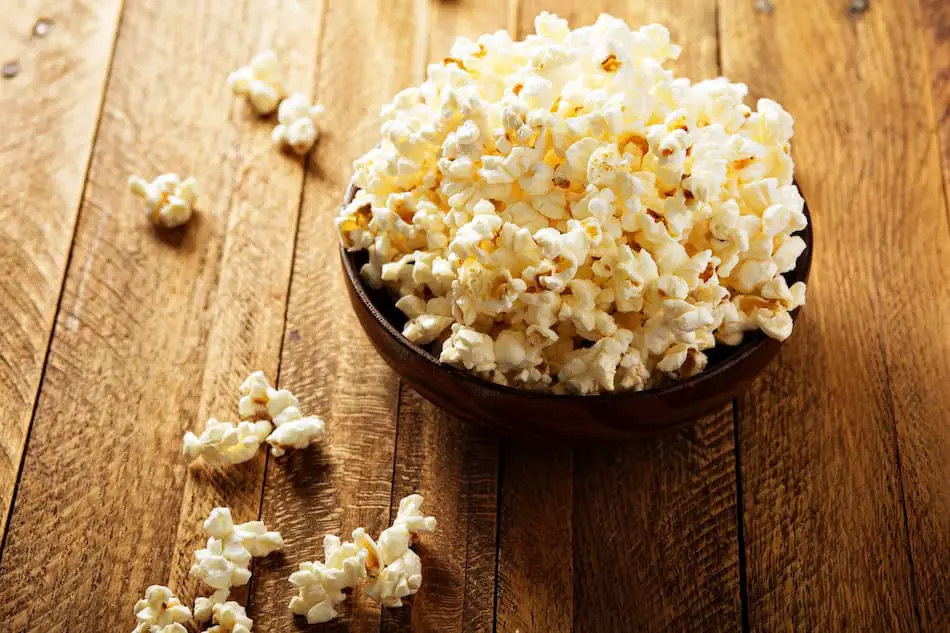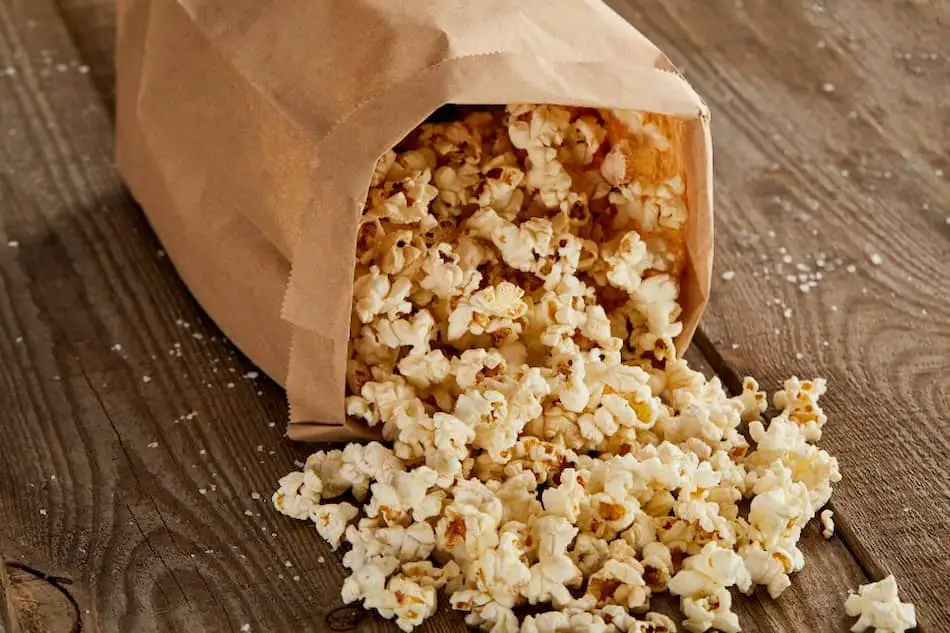
If you are looking for a healthy, high-fiber snack, popcorn is a great choice. Popcorn meets the definition of a high-fiber food, with 3.48 grams of fiber in a 3-cup serving1, which represents 13% of the US recommended Daily Value (DV) of fiber2.
Popcorn is a whole grain food, since all parts of the kernel (bran, germ, endosperm) are retained when popcorn is popped3. This is important because 85% of Americans don’t eat enough whole grains, fruits or vegetables, according to the USDA Dietary Guidelines2. Whole grains are associated with a reduced risk of cardiovascular disease, type 2 diabetes and obesity2,4.
The high-fiber content of popcorn means that it’s a very filling food. In fact, it’s the most filling snack food tested in the Holt Satiety Index5.
What is the Definition of High Fiber?
Per the FDA, in order for a food to be a “good source” of a nutrient, it must contain 10-19% (or more) of the Daily Value for that particular nutrient4. Therefore, popcorn meets the definition of high fiber since it provides 13% of the DV of fiber in one 3-cup serving.
How Much Fiber Do You Need?
Here are the US recommended Daily Values for fiber2:
- Men 50 and younger: 38 grams
- Men older than 50: 30 grams
- Women 50 and younger: 25 grams
- Women older than 50: 21 grams
Food labels use 28 grams to calculate the % DV of fiber in their products, which represents the average of the above numbers.
Is The Fiber in Popcorn Soluble or Insoluble?
The fiber in popcorn is composed of hemicelluloses (∼69%), cellulose (∼21%), and lignin (∼1%)6, which are insoluble types of fiber. There is no Daily Value for insoluble or soluble fiber. Both types are good for you and you will get both types if you eat a wide variety of high-fiber foods.
Is Popcorn High in Carbs?
From a macronutrient perspective, popcorn is approximately 2/3 carbohydrate and 1/3 protein, plus a trace amount of fat1:
| Macronutrients in Popcorn (air-popped, plain) | Grams Per Serving (3 cups) |
| Carbs | 6.22 |
| Protein | 3.03 |
| Fat | 0.363 |
Strictly speaking, popcorn is a high-carbohydrate food. However, its high-fiber content means that many of those carbs will pass through your system undigested. This gets at the concept of “net carbs.”
Net carbs are the total carbohydrates in a food minus its total dietary fiber. The net carb number is a more helpful measure of a food’s impact on your metabolism than the simple carb amount.
Subtracting the fiber content of a 3-cup serving of popped popcorn from its total carb content (6.22 – 3.48) leaves a net carb amount of 2.74. This reduces the carb content to less than a third of the total macronutrient content. Therefore popcorn is higher in protein than carbs, from a net carb perspective.
Watch Out for Popcorn Add-ons
You knew this was coming—the healthfulness of popcorn depends on how you prepare it. If you use butter or oil to pop or flavor your popcorn, you will add a high number of empty calories to your otherwise-healthful snack.
Commercial popcorn may also include a lot of added salt, sugar or artificial flavorings. And microwave popcorn packaging is typically made with PFAs, chemicals that are associated with negative health effects including hormone disruption and even cancer7,8.
For these reasons, pop your own popcorn at home, or buy it pre-popped.
The Easiest Way Ever to Make Popcorn at Home

A super-easy way to pop popcorn at home is to put 1/3 cup kernels in a brown paper lunch bag with the top folded over twice ( no butter or oil needed) and pop for 1-2 minutes. Stop popping as soon as the pops are less than 1 per second.
Try seasoning with nutritional yeast for a parmesan-like taste that’s high in B vitamins. My favorite fortified yeast is Bragg’s Nutritional Yeast.
If you buy the pre-popped type, look for brands popped in olive oil or avocado oil rather than seed oils like canola, safflower or sunflower oil (here’s why). The oil that your store-bought popcorn was popped in is in the ingredients list; it’s typically the second ingredient after popcorn.
Here are two good brands to try: Giada Simply 7 (olive oil) or Lesser Evil Avocado-licious (cold-pressed avocado oil).
Summary
Popcorn is a high-fiber food that contribute to a healthy diet. It’s a terrific, filling snack choice. Just watch out for unhealthy cooking oils or flavorings that could render your healthy snack into an unhealthy one.
Resources
2 2020-2025 USDA Dietary Guidelines for Americans
4 Cho, S. S., Qi, L., Fahey, G. C., Jr, & Klurfeld, D. M. (2013). Consumption of cereal fiber, mixtures of whole grains and bran, and whole grains and risk reduction in type 2 diabetes, obesity, and cardiovascular disease. The American journal of clinical nutrition, 98(2), 594–619. https://doi.org/10.3945/ajcn.113.067629.
4 FDA
6 Heller, S.N., Rivers, J.M., Hackler, L.R. Dietary Fiber: The Effect of Particle Size and pH on its Measurement. First published: March 1977. https://doi.org/10.1111/j.1365-2621.1977.tb01517.x.
7 Moreta C, Tena MT. Determination of perfluorinated alkyl acids in corn, popcorn and popcorn bags before and after cooking by focused ultrasound solid-liquid extraction, liquid chromatography and quadrupole-time of flight mass spectrometry. J Chromatogr A 2014;1355:211-8. doi:10.1016/j.chroma.2014.06.018.
8 Martínez-Moral MP, Tena MT. Determination of perfluorocompounds in popcorn packaging by pressurised liquid extraction and ultraperformance liquid chromatography-tandem mass spectrometry. Talanta 2012;101:104-9. doi:10.1016/j.talanta.2012.09.007.



